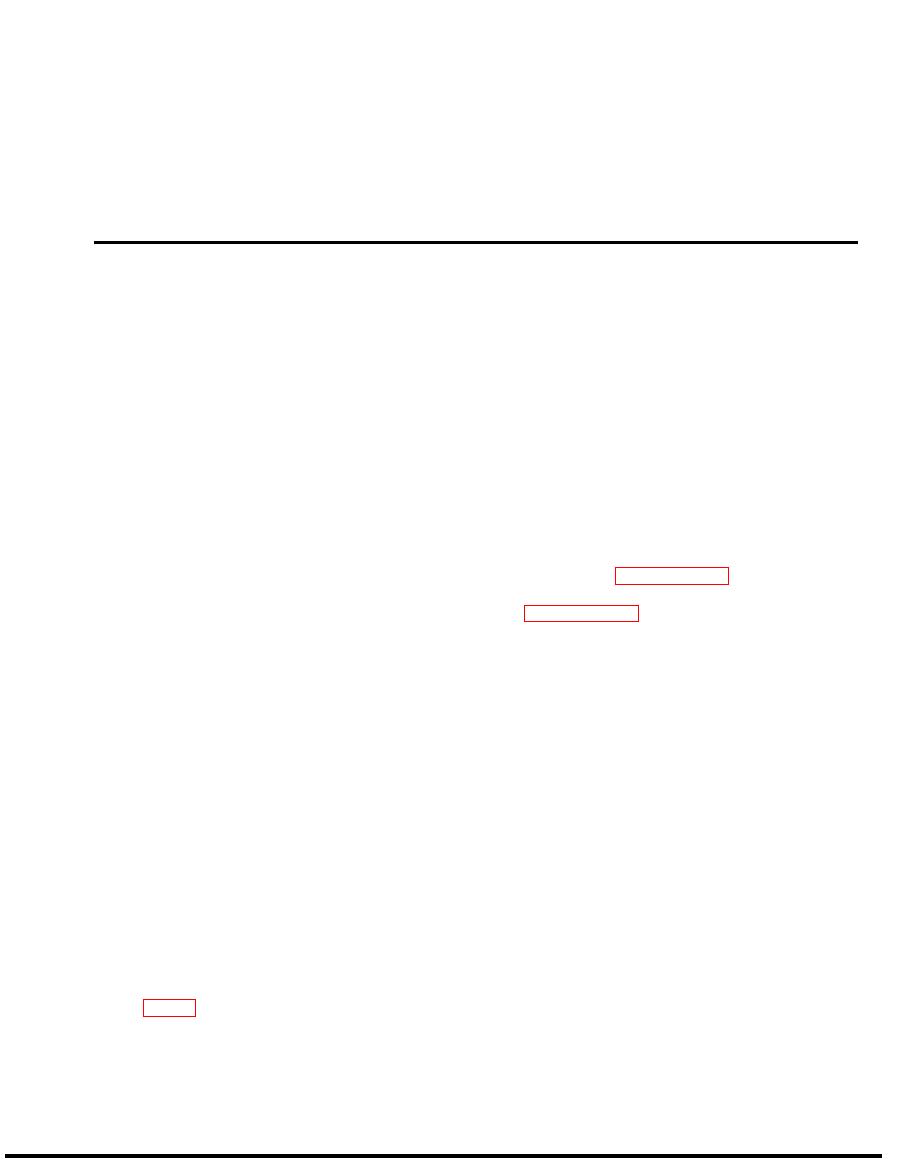
TM 11-6625-2616-14
FUNCTIONING
age protective circuit prevents damage to U5.
5-1. Introduction
This circuit is formed by diodes CR3, CR4, CR5,
The electrics of the AN/GSM-64A Digital Volt-
CR6, and transistors Q1 and Q2 with associated
meter may be divided into two basic sections: a
bias resistors. Voltage is limited at just over 12
signal conditioning section and a digitizing sec-
volts.
tion. The signal conditioning section processes
b. U5 is connected to form an extremely high
dc voltage inputs into a normalized dc analog
input impedance, low output impedance device
signal. The digitizing section accepts the normal-
which feeds the digitizing circuits on the main
ized dc analog signal from the signal condition-
circuit board.
ing section and converts it to a visual digital
display.
The digitizing section functions to accept the
nomalized dc analog signal and process it so
a. The signal conditioning circuits are con-
that it may be displayed digitally with the pro-
tained on the signal conditioning circuit board
per decimal and polarity signs, The digitizing
assembly. These circuits provide-
circuits are located on the main circuit board.
(1) Accurate attenuation of large input
In this chapter, paragraphs 5-5 and 5-6 describe
voltages.
the overall operation of the digitizing section
(2) Filtering of the input signal.
and paragraphs 5-7 through 5-12 describe other
main elements of the digitizing circuitry.
(3) Over-voltage protection for solid-state
components.
(4) A low source impedance to the digitiz-
The ac line frequency is used to trigger the basic
ing section.
timing for the digitizing circuits. A number of ac
b. Three pushbutton switches on this circuit
line pulses are processed, initiating the start of
board allow the instrument to operate as a dc volt-
a flip-flop. This flip-flop is used to gate on a 500
meter, a radiometer, or as an ac voltmeter when
KHz oscillator which drives a frequency count-
an ac converter has been installed.
er. At the 100,000 count the flip-flop is reset,
thus generating a 200-millisecond wide pulse.
c. The volts dc mode has three ranges: 10
This 200-millisecond period is used to allow an
volts, 100 volts, and 1,000 volts full scale. Any
integrating capacitor to charge from the signal
range may be selected by depressing the range
conditioning circuits. At the end of the 200-milli-
change pushbutton or the instrument may be
second period, the frequency counter is reset
operated in the auto-range mode. In the auto-
and the charged integrating capacitor is switch-
range mode, the range attenuator is set to the
ed to a constant current reference supply which
proper range by logic circuits which actuate the
allows a controlled discharge to occur. The fre-
range relays.
quency counter proceeds to count pulses from the
500 KHz oscillator until the capacitor has dis-
charged to its precharged condition, at which
Description
time a null detector circuit ends the cycle. The
frequency counter displays the voltage reading
in terms of pulses counted during the discharge
a. Signal high is connected to the attenuator
input, pin 4. Range selection provides the pro-
period. When the 500 KHz oscillator stops, the
ac line pulses again trigger the flip-flop and the
per voltage level into pin 8 of the buffer-amplifier.
cycle is repeated.
Signal filtering is provided by C1 and C2. A volt-


